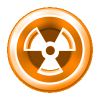Rotatepoint: Difference between revisions
CraigFatman (talk | contribs) No edit summary |
CraigFatman (talk | contribs) No edit summary |
||
| Line 5: | Line 5: | ||
:<xpivot>, <ypivot>: the coordinates (X and Y) of the central pivot point | :<xpivot>, <ypivot>: the coordinates (X and Y) of the central pivot point | ||
:<x>, <y>: the coordinates of a point to rotate in relation to the pivot point | :<x>, <y>: the coordinates of a point to rotate in relation to the pivot point | ||
:<ang>: how many units to rotate (2048 per revolution; | :<ang>: how many units to rotate (2048 per revolution; clockwise) | ||
:<xreturnvar>, <yreturnvar>: the post-rotate coordinates of the point | :<xreturnvar>, <yreturnvar>: the post-rotate coordinates of the point | ||
Revision as of 12:26, 5 April 2011
rotatepoint <xpivot> <ypivot> <x> <y> <ang> <xreturnvar> <yreturnvar>
Rotates the point around the pivot by the specified angle and returns the coordinates into xreturnvar and yreturnvar.
- <xpivot>, <ypivot>: the coordinates (X and Y) of the central pivot point
- <x>, <y>: the coordinates of a point to rotate in relation to the pivot point
- <ang>: how many units to rotate (2048 per revolution; clockwise)
- <xreturnvar>, <yreturnvar>: the post-rotate coordinates of the point
This command can be used in conjunction with dragpoint for rotating sectors. The rotatepoint command calculates the end position for a wall point after rotating. To move the point to that position, use dragpoint.
